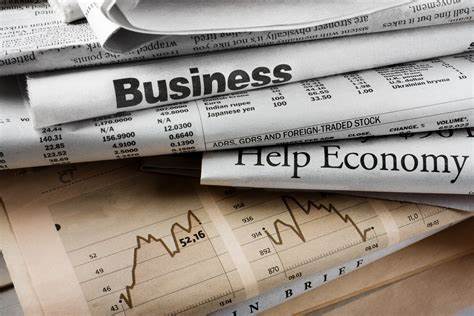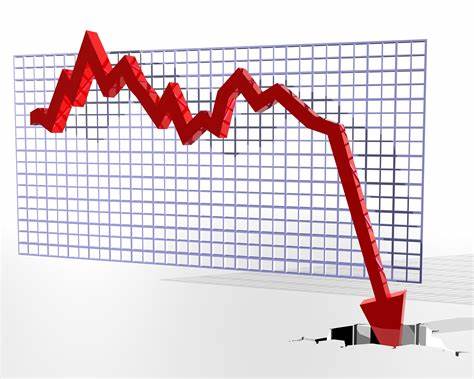A Dollar Rally Based on Risk Trends Alone May Not Last for Long
It is difficult to forecast where the markets will be in a month or three months when volatility is as high as it is today. However, when measuring the quality of a trend; it is imperative to gauge the fundamentals that will carry the US dollar that far out to better ascertain the stability and duration of the incredible rally that the benchmark currency has carved out since the second half of January.
The Economy and the Credit Market
It is difficult to forecast where the markets will be in a month or three months when volatility is as high as it is today. However, when measuring the quality of a trend; it is imperative to gauge the fundamentals that will carry the US dollar that far out to better ascertain the stability and duration of the incredible rally that the benchmark currency has carved out since the second half of January. While there are a few fundamental signposts traders can point to when they are looking to qualify the greenback’s current bout of strength (the relief in a positive turn for NFPs or perhaps the better than expected 4Q GDP among other things); the real driver for this move is underlying risk appetite. Any doubts to this view can be cleared up by a quick review of the incredible correlation between all the major asset classes (on both sides of the risk spectrum). The US dollar is both a safe haven currency and its extraordinarily low market rates made it an ideal source of funding for the carry buildup through 2009. Both of these roles work in the benchmark’s favor now that sentiment has faltered and the effort to unwind extended yield positions is underway. Yet, the current correction in the market and underlying risk appetite will not last as long as the preceding build. The economy and rates are return are improving, just at a tempered pace. The value of dollar in euro is also improving. The foreign exchange is getting stable and the over all global economy is expected to boom in the long run. A point of equilibrium will be found within the first quarter; and valuation from there will rest with rates and economic progress. On that front, the dollar sits on a relatively strong recovery but Fed hikes look to be far off on the horizon.
A Closer Look at Financial and Consumer Conditions

The fissures that have developed in the global financial market have turned into panic-inducing cracks. Like the Dubai World reaction this past November, market participants are now fearing the potential fallout from the European Union’s financially ailing members. Greece has been at the front of the media craze; but Spain, Portugal and others are suffering just as much under the strict rules of the collective. Given how interconnected the markets are, a serious problem any one of these economies or for the Euro Zone in general could create global shocks. However, these aren’t the only threats. Japan’s credit outlook has been downgraded, the UK is facing a general election and the US is struggling to work down its record deficit.
The world’s largest economy is roaring back to life – at least that is what the casual observer would deduce from the 5.7 percent annualized pace of growth reported in last week’s advanced 4Q GDP reading. However, a critical look at the data offers a more realistic view of the United States’ recovery. The first consideration is that the annualized figure is a comparison of conditions during the same period a year ago. Considering the pain the economy was in during this time, current activity levels do seem to be running at such a breakneck pace. However, a realistic view of the economy can be found in the tempered pace of consumer spending, the Fed’s report of tighter lending conditions and the 10 percent unemployment rate.
The Financial and Capital Markets
The financial markets were shaken this past week. While the period would start off on a strong foot as the traditional benchmark assets would attempted to retrace some of the late-January losses; Thursday’s incredible plunge in sentiment and asset prices ushered in what may be the next wave of a larger bear wave. During this single day, the dollar pushed to its highest levels since July, the Dow Jones Industrial Average suffered its biggest single-day decline since July 2nd and gold caved over 4 percent. The severity of these moves is not a reflection of short-term catalysts but rather the long-term fundamental imbalance that had developed through much of 2009. With the return of speculative capital following the financial crisis of 2008, investors were looking to put their money back to work; but there is a relative bottleneck in terms of liquidity and price reaction. The influx of funds forced prices higher without the fundamental back to support the subsequent levels. Therefore, at the first sign of instability, investors that are already comfortable with cashing out will look to preserve profits or investable capital and send the financial markets on a rollercoaster.
A Closer Look at Market Conditions

Thursday’s epic declines brought the primary capital markets a big step closer to establishing a larger bear trend. The Dow’s channel break is now threatening 10,000. Gold has cleared three-month support near $1,075. Crude is just on the other side of the rising trend going back to the first quarter of 2009 now at $72.50. There are more than a few important securities that have already crossed the line; but these benchmarks all need to make their moves to crush all doubt that the bears are in control and investors have to move in to protect their accounts. It shouldn’t take long to confirm whether Thursday’s move was the catalyst to a bigger wave.With Thursday’s plunge for capital markets and the mass withdrawal of speculative capital, it comes as no surprise that risk premiums have soared. The traditional indicators are all responding as expected. The CBOE VIX jumped over 4 percentage points to 26 percent and the DailyFX Volatility Index has itself spiked. However, these indicators are highly reactive and correct on a dime. It is the two-month high in corporate default swaps, the surge in risk reversals and the influx of capital into government debt (of those countries which are not at immediate risk of default) that offers the true reading of sentiment. Under these conditions, dramatic things can happen.
